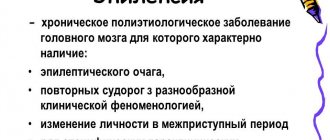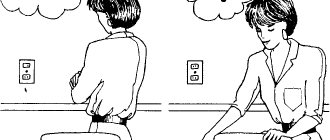Leadership and conflict in a small group
It is believed that leadership (from the English leader - leader) is the ability of people to influence both an individual and a group, directing their efforts to achieve their goals.
This is a natural socio-psychological process, built on the influence of a person’s authority on the behavior of all members of the group or a certain part of it. In this case, influence is understood as those actions of a person that make a change in the behavior, attitudes and feelings of another person. Any group that solves a problem that is significant to it always puts forward a leader to solve it, who can be defined as a person capable of uniting people to achieve a goal. At the same time, a leader is a member of a group who, in significant situations, is capable of exerting a significant influence on the behavior of other participants and practically leading them. However, the concepts of “leadership” and “management” are not the same. Unlike a manager, a leader is not officially appointed, is not given any formal authority, and does not bear legal responsibility for the state of affairs in the group. In a small group, in which the leader also acts as a leader, the moral and psychological climate is better than in one where the leader does not realize his ability to establish friendly work of the team.
The set of techniques and methods used by a leader to influence the people who depend on him is called leadership style . With an authoritarian style, the leader acts in an authoritative, directive manner towards his followers, rigidly distributing roles between group members. An authoritarian leader concentrates almost all the main functions of management in his own hands, not allowing group members to discuss or challenge the decisions he makes or his actions. The opposite of the authoritarian style is the democratic leadership style, in which he strives to manage the group in close cooperation with the rest of its members, giving them a certain freedom of action, decisions, and initiative. With a liberal leadership style, the leader practically removes himself from the active management of the group, giving its members unlimited freedom of action.
There are cases when the leadership style chosen by the leader led to tension in interpersonal relationships in a small group, the formation of a conflict situation and group conflict. Conflict in a small group is an intractable situation that arises due to the existing disharmony of interpersonal relations between its members or an imbalance between the structures existing in it. As a rule, it arises not due to the manifestation of objective circumstances, but as a result of their incorrect subjective perception and assessment by group members.
Among the causes of conflicts, the most significant is the presence of contradictions between the interests, values, goals, motives, and roles of group members. The management of a group by a formal leader is negatively affected by the presence in a small group of confrontation between its various members (for example, formal and informal leaders) and microgroups.
The basic principles of organizing and implementing communication between a manager and his employees, which allow avoiding or promptly resolving conflict situations, include the following psychological, pedagogical and organizational requirements:
1. Communication with an employee should be carried out taking into account his personal values and individual psychological characteristics. In order to achieve the expected results in interaction with it, it is always necessary to take into account the fact that the psychological effect of each external influence on a person is determined by its specificity.
2. To carry out effective communication, it is necessary to know the general patterns of functioning of the human psyche. To do this, the manager needs knowledge of the mechanisms of assimilation of information, the characteristics of its perception during communication, factors influencing the productivity of thinking, etc.
3. The process of communication with an employee, its elements and technology must be thought through in advance by the manager. It is especially important to take this principle into account during the first time working as a manager.
The employee’s positive reaction to communication must be stimulated. It is meant that in this case the manager provides favorable psychological support and creates conditions for the employee’s interest in the exchange of certain professional, social or other information.
5. Taking into account the external conditions in which communication takes place. External conditions must be implemented in the interests of communication.
6. Ensuring the activity of subjects of communication. Both the volume of information exchange and its objectivity depend on this. That is why, already at the initial stage of communication, the manager must use all the means at his disposal to develop the employee’s interest in communication and his personal cognitive activity.
Date added: 2017-02-28; | Copyright infringement
Related information:
- C) conflict between desire and the inability to realize it
- I. Small group. Person in a group
- A.1. LOW ALTITUDE FLIGHTS.
- Analysis of one of Euripides' tragedies: theme, conflict, problems.
- Ticket number 3 question 1. . Pedagogical characteristics of a teenager, deviant behavior, conflict situations. Features of educational and work activities
- The struggle for leadership: L.P. Beria, G.M. Malenkov, N.S. Khrushchev. Reforms of the 50s - early 60s
- In the first group of criteria characterizing the personnel management process as a whole, we propose to use the following five.
- It is important to know which group of disorders the patient’s diagnosis belongs to
- VERTICAL TAKE-OFF, HANGING TURN, HOVING, MOVEMENT AND LOW ALTITUDE FLIGHT NEAR THE GROUND.
- Human interaction can be cooperative, competitive and conflictual.
- Interdependence or interdependence of the interests of the parties to the conflict;
- Types of armed conflicts and their participants.
Search on the site:
Types of destructive behavior
It is difficult for psychologists to clearly define what destructive activity is, since it is inseparable from the concept of a norm, and a norm, nevertheless, is an unstable concept.
The main classification of types of such behavior is given below.
- Delinquent
Is the illegal actions of a person, which entails criminal, administrative and legal liability. - Deviant
A pattern of behavior that contradicts the moral, ethical and ethical ideas of the public (difference from the recognized norm of behavior).
Read on topic:
Teenagers with deviant behavior
4
Consequences of intragroup conflicts
A conflict is essentially a disharmony of interpersonal or intragroup relations, but this does not mean an indication of the consequences of its course that are exclusively destructive for the life of a small group. There is a generally accepted opinion among experts that conflicts can be both destructive and constructive in nature. The role of conflict in the development of a group. The fact that due to the presence of intra-group contradictions (and it is precisely the contradiction that constitutes the essence of the conflict) the development of the group, its transition to a new, higher level of functioning, gives grounds to talk about quite convincing confirmation of the constructive point of view on the conflict. Robert M.-A and Tilman F. in the book “Psychology of the Individual and the Group” highlight the following consequences of conflicts in the group:
1. Formation of subgroups. One of the spontaneous solutions to the tension experienced by a group is the formation of a subgroup or a change in their distribution. This phenomenon is observed especially in cases where conflict arises between two significant members of the group (struggle for leadership). Division into two subgroups and a hidden division of goals (sometimes personally for the leaders) and spheres of influence can relieve - at least temporarily - tension.
Example: the relationship between an old master and a young engineer. Subgroups of young and older people. Everyone creates their own sphere of influence. And as a result, almost complete equilibrium is achieved.
2. Removal of dissenting members. The forced or spontaneous removal (flight) of one or more members who are disunited or constitute a small minority can also ease tension in the group resulting from conflict between its members. If the influence of one of these members is zero or greatly diminished, the group will seek to expel him (if he "spontaneously" leaves the group).
3. Selecting a scapegoat. Conflict may be accompanied by aggressive release of tension directed at one person or minority who are considered to be responsible for the difficulties encountered. Aggressiveness directed at the scapegoat relieves the group of tension. It may or may not be accompanied by the expulsion of scapegoats. The scapegoat may be a low-power individual, a leader, a minority subgroup, or some other group.
4. Organizational changes in the group. As a result of tension in the group, the following occurs:
b Changes to a group goal or fixation of a common goal.
Examples: mobilizing the forces of one group against another group. Fixing a goal (especially with the hope of achieving it) eases the tension that has arisen due to internal strife.
Resolving conflicts by redefining the goals of the subgroup and the personal responsibilities of its members.
b A change in the plan of action, the use of new means to achieve an already intended goal.
Examples: If, in the event of a conflict, a discussion procedure and means of persuading the enemy are provided, this reduces tension.
It is envisaged to create a subcommittee.
b Reforms of group structures:
Examples: centralization or decentralization appears as a means of resolving difficulties in a group.
5. Appearance or change of leader. A special case of changing or establishing the role of an individual in order to reduce tension is a change of leader: he is appointed or changed.
The tension can be resolved by scapegoating the former leader and installing a new leader. This type of decision is associated with a cultural model that if the group "does bad" it is the leader's fault.
6. The breakup of the group. The split of members and the liquidation of the group is the most radical consequence of internal tension. This occurs when the forces of disintegration during a period of tension were more active than the forces of cohesion
Types of destructive behavior
Classification of destructive behavior is difficult, since specialists have to work with a floating value - the norm. It is subject to change, and what is considered acceptable today will be beyond the scope of adequate behavior tomorrow, and vice versa. Basically, psychologists divide destructive behavior into two large groups:
- delinquent behavior (exceeding legal boundaries, breaking the law);
- deviant behavior (non-compliance with generally accepted standards of morality and morality).
Prevention of destructive behavior
What can be done to prevent destructive behavior? Who does this and what methods are used? The main burden falls on schools and other educational institutions. The fact is that it is precisely in them that there is an opportunity to influence children en masse. For this purpose, special educational activities are carried out aimed at preventing social destructive behavior.
But a lot can be done with the help of the child’s family members. If parents and other relatives encourage only socially approved actions and give each other love and warmth, the likelihood of behavioral disorders in their children will be very low.
Sources
- https://gopsy.ru/otnoshenija/ssory/konflikty/konflikt-mezhdu-lichnostju-i-gruppoj.html
- https://www.syl.ru/article/167327/new_destruktivnoe-povedenie-cheloveka-destruktivnyie-formyi-povedeniya
- https://EvriKak.ru/info/destruktivnoe-povedenie-cheloveka/
- https://story-woman.ru/psihologia/destruktivnoe-povedenie-cheloveka/
- https://PsyTheater.com/konflikt-lichnosti-mezhdu-gruppoy-i-lichnostu.html











